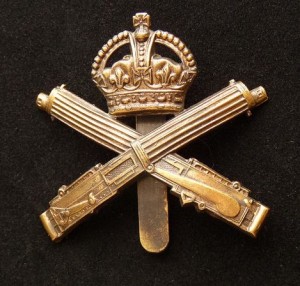Personal Details
Born: 28 February 1895 in Steel, Wem, Shropshire
Family: He was the third of six children born to Joseph Speakman, an agricultural labourer, and his wife Maria. He married Doris Crewe in 1921 in Hanmer Parish Church, Flintshire, Wales; no children can be traced for the marriage.
Residence: In 1899 he lived at The Hatch, Lyneal, Ellesmere, Shropshire; by 1901 the family had moved to Etchleys in Lyneal. In 1911 he lived at 10 Northwood, Wem; in 1919 he was discharged to 91 York Street, Northwood, Wem and in 1939 he was living in Church Lane, Caulwell, Repton, Derbyshire.
Employment: In 1911 he was a domestic gardener. When he enlisted in 1917 he was a gardener and in 1939 a head gardener.
Died: In 1977 in Wrexham Maelor, Denbighshire, Wales, aged 82.
Military Details
Regiment: Machine Gun Corps (previously the Army Reserve)
Rank: Private
Service Number: 116099 (previously 34402)
Date of Enlistment: 12 June 1917
Date of Discharge: 8 March 1919
Reason for Discharge: Demobilisation
Other Information: He suffered from trench foot in 1917 and was hospitalised back to the UK.
John was awarded the Campaign Medals (British War Medal and Victory Medal)

The British War Medal (also known as 'Squeak') was a silver or bronze medal awarded to officers and men of the British and Imperial Forces who either entered a theatre of war or entered service overseas between 5th August 1914 and 11th November 1918 inclusive. This was later extended to services in Russia, Siberia and some other areas in 1919 and 1920. Approximately 6.5 million British War Medals were issued. Approximately 6.4 million of these were the silver versions of this medal. Around 110,000 of a bronze version were issued mainly to Chinese, Maltese and Indian Labour Corps. The front (obv or obverse) of the medal depicts the head of George V. The recipient's service number, rank, name and unit was impressed on the rim.
The Allied Victory Medal (also known as 'Wilfred') was issued by each of the allies. It was decided that each of the allies should each issue their own bronze victory medal with a similar design, similar equivalent wording and identical ribbon. The British medal was designed by W. McMillan. The front depicts a winged classical figure representing victory. Approximately 5.7 million victory medals were issued. Interestingly, eligibility for this medal was more restrictive and not everyone who received the British War Medal ('Squeak') also received the Victory Medal ('Wilfred'). However, in general, all recipients of 'Wilfred' also received 'Squeak' and all recipients of The 1914 Star or The 1914/1915 Star (also known as 'Pip') also received both 'Squeak' and 'Wilfred'. The recipient's service number, rank, name and unit was impressed on the rim.

